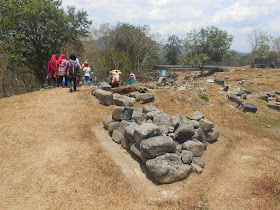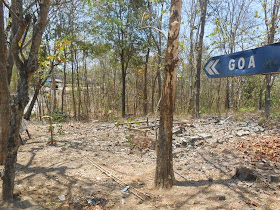Continued from Stupa remains, the altars and a meeting place of sorts.
Next we headed to what is believed to be the women's dormitory or residence.
In front lies remains of a pool.
The write claimed it was here Ratu Balqis or Queen of Sheba received a letter from King Solomon demanding her to submit.
Entering the walls of the said women's quarters.
Interesting are the well-like pools...
Entering another level or layer before turning left to get to the southern walls.
The section called Pendopo or extra building/living quarters as we walked back from the south towards the main gates.


























































